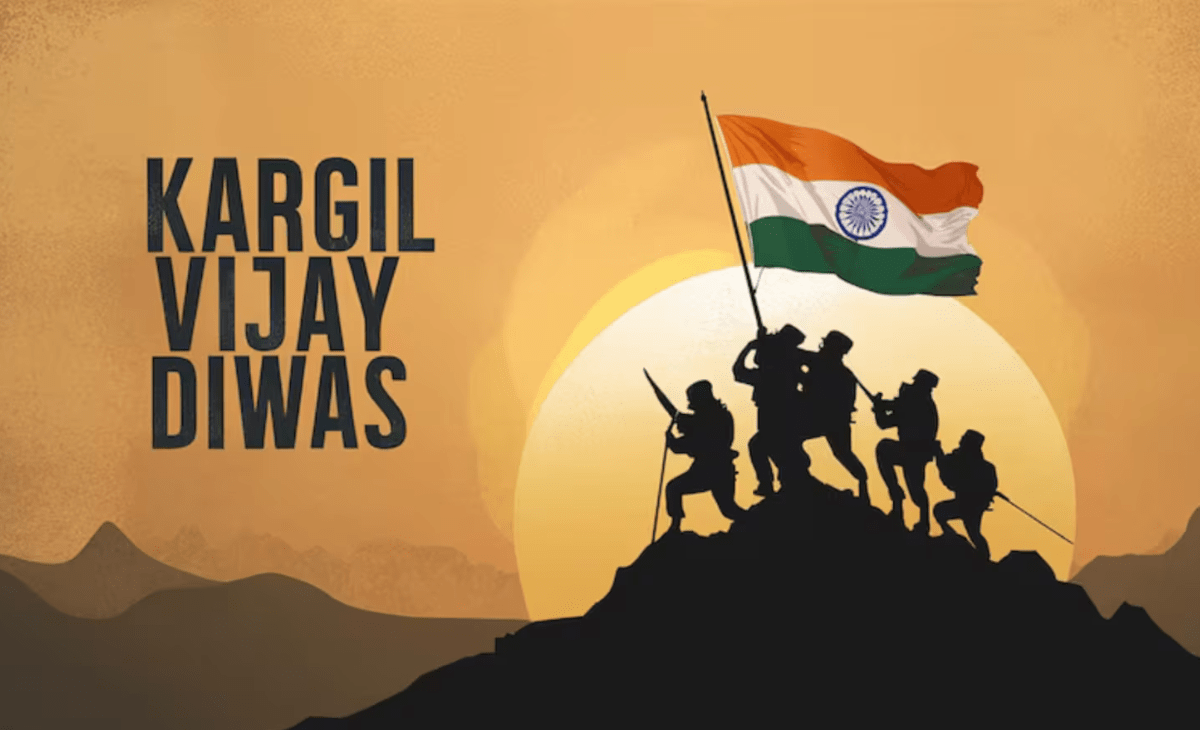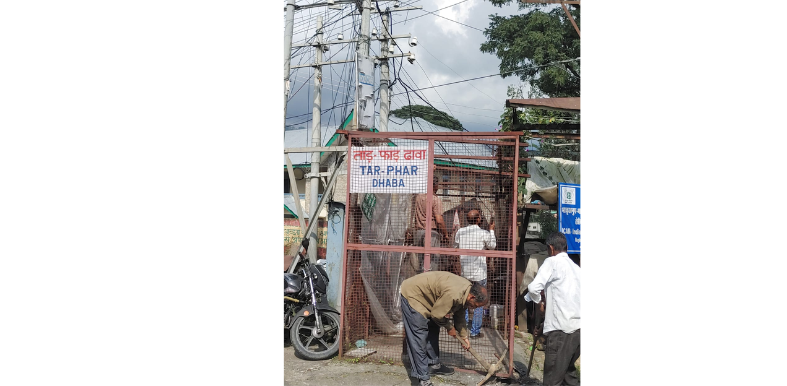Anupama Sharma
Kargil Vijay Diwas is celebrated every year on July 26 to observe India’s victory over Pakistan in the Kargil War for ousting Pakistani forces from their occupied positions on the mountain tops of northern Kargil district in Ladakh in 1999.
The Kargil War was fought between India and Pakistan from May to July 1999 in the Kargil district of Ladakh, then part of the Indian-administered state of Jammu and Kashmir and along the Line of Control (LoC). In India, the conflict is also referred to as Operation Vijay (victory), which was the codename of the Indian military operation in the region.
The Indian Air Force acted jointly with the Indian Army to flush out the Pakistan army and paramilitary troops from vacated Indian positions along the LoC in what was designated as Operation Safed Sagar. There were various hidden ambitions of Pakistan.
Reason of conflict
The conflict was triggered by the infiltration of Pakistani troops— disguised as Kashmiri militants — into strategic positions on the Indian side of the LoC, which serves as the de facto border between the two countries in the disputed region of Kashmir.
During its initial stages, Pakistan blamed the fighting entirely on independent Kashmiri insurgents, but documents left behind by casualties and later statements by Pakistan’s Prime Minister and Chief of Army Staff showed the involvement of Pakistani paramilitary forces, led by General Ashraf Rashid. The Indian Army, later supported by the Indian Air Force, recaptured a majority of the positions on the Indian side of the LoC; facing international diplomatic opposition, Pakistani forces withdrew from all remaining Indian positions along the LoC.
High altitude warfare in mountain
The Kargil War is the most recent example of high-altitude warfare in mountainous terrain, and as such, posed significant logistical problems for the combatting sides. It also marks one of only two instances of conventional warfare between nuclear-armed states (alongside the Sino-Soviet border conflict).
India had conducted its first successful test in 1974; Pakistan, which had been developing its nuclear capability in secret since around the same time, conducted its first known tests in 1998, just two weeks after a second series of tests by India.
After the Indo-Pakistani war of 1971, there had been a long period with relatively few direct armed conflicts involving the military forces of the two neighbours — notwithstanding the efforts of both nations to control the Siachen Glacier by establishing military outposts on the surrounding mountains ridges and the resulting military skirmishes in the 1980s.
During the 1990s, however, escalating tensions and conflict due to separatist activities in Kashmir, some of which were supported by Pakistan, as well as the conducting of nuclear tests by both countries in 1998, led to an increasingly belligerent atmosphere. In an attempt to defuse the situation, both countries signed the Lahore Declaration in February 1999, promising to provide a peaceful and bilateral solution to the Kashmir conflict.
Infiltration by Pakistani forces
During the winter of 1998-1999, some elements of the Pakistani armed forces were covertly training and sending Pakistani troops and paramilitary forces, some allegedly in the guise of ‘mujahideen’, into territory on the Indian side of the LOC.
The infiltration was codenamed “Operation Badr”.its aim was to sever the link between Kashmir and Ladakh and cause Indian forces to withdraw from the Siachen Glacier, thus forcing India to negotiate a settlement of the broader Kashmir dispute. Pakistan also believed that any tension in the region would internationalise the Kashmir issue, helping it to secure a speedy resolution. Yet another goal may have been to boost the morale of the decade-long rebellion in Jammu and Kashmir by taking a proactive role.
The Kargil War resulted in significant casualties on both sides. Indian forces suffered 527 fatalities, 1,363 injuries and one prisoner of war, while Pakistani losses are estimated to range from 400 to 4,000.
India lost 527 soldiers while 1,363 others were injured. Flight Lieutenant K. Nachiketa was captured after his MiG-27 was shot down during a strike operation.
Out of 527 Indian soldiers martyred during the Kargil War, 52 were from Himachal Pradesh. Out of four Param Vir Chakra winners, two were from the state. Captain Vikram Batra was one such brave-heart from Palampur, who sacrificed his life for the country. Havildar Sanjay Kumar of Bilaspur was also honoured with Param Vir Chakra for his gallantry during Kargil War.
Pakistan saw an estimated 400 to 4,000 deaths, though the country never officially released its casualty figures, and the numbers vary widely depending on the source. Eight Pakistani soldiers were captured by Indian forces during the conflict.
Following the Kargil War, India undertook significant reforms in its national security apparatus, primarily focusing on intelligence, border management and defence coordination. Key changes included establishing new intelligence agencies, improving tri-service integration and enhancing infrastructure and logistical capabilities.
First women officer of Indian Air force
Flight Lieutenant Gunjan Saxena became the first woman officer in the Indian Air Force to fly in a combat zone during the Kargil War. She flew dangerous missions, including casualty evacuation and surveillance, and is celebrated for her bravery and contribution to the war effort. A Bollywood movie, also titled ‘Gunjan Saxena: The Kargil Girl’, was made about her life and experiences.
(The writer is a lecturer in English in Hamirpur)





